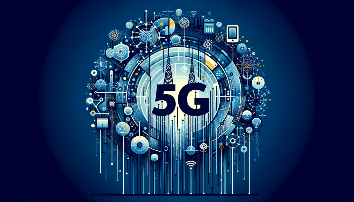
5G technology has significantly transformed the landscape of streaming and interactive services. Here’s an overview of how 5G enhances streaming quality and interactive experiences:
Faster Download and Upload Speeds: 5G networks can deliver speeds up to 10 Gbps or more, which allows for rapid downloads and high-quality streaming without buffering.







Low Latency: With latency as low as 1 ms, 5G reduces lag in real-time applications, which is crucial for interactive gaming, video conferencing, and augmented/virtual reality experiences.
Higher Resolutions: 5G supports streaming in 4K and even 8K resolutions seamlessly, providing a more immersive viewing experience with higher fidelity.
Adaptive Bitrate Streaming: 5G networks can handle multiple bitrates, doing real-time adjustments to maintain quality without buffering, even in variable network conditions.
Augmented Reality (AR) and Virtual Reality (VR): 5G enables smoother AR and VR experiences due to its low latency and robust data transfer capabilities, making applications in gaming, training, and remote assistance more viable.
Real-time Interactive Content: Interactive live streaming events, such as sports or concerts, benefit from 5G’s low latency, allowing for live polls, replays, and real-time commentary.
Content Delivery Optimization: 5G networks support edge computing, allowing content to be processed closer to the user. This reduces latency and improves the speed and quality of data delivery.
Real-time Data Processing: Edge computing allows for real-time analytics and interactive features, enhancing user engagement during live broadcasts.
Tailored Experiences: Network slicing allows operators to create virtual networks tailored for specific applications, such as dedicated bandwidth for live streaming or gaming, ensuring better quality of service.
Resource Allocation: This technology enables efficient resource allocation based on user demand, providing higher quality experiences during peak times.
More Connected Devices: 5G can support a vast number of connected devices per square kilometer, allowing for simultaneous high-quality streaming on multiple devices without degraded performance.
Smart Home Integration: This allows for seamless integration of smart devices into the streaming experience, where voice interfaces and other interactivity can enhance the overall user experience.
Secure Connections: 5G networks are designed with improved security features, providing users with a secure environment for streaming and interactive experiences, which is crucial for protecting personal data.
The deployment of 5G technology is revolutionizing how content is streamed and interacted with. From higher quality videos and immersive experiences in AR/VR to smoother live events and enhanced interactive features, the implications of 5G for both consumers and businesses are profound, paving the way for innovative applications and services that were previously not feasible. As 5G continues to expand globally, we can expect further advancements in entertainment, education, gaming, and beyond.


Leave a Reply